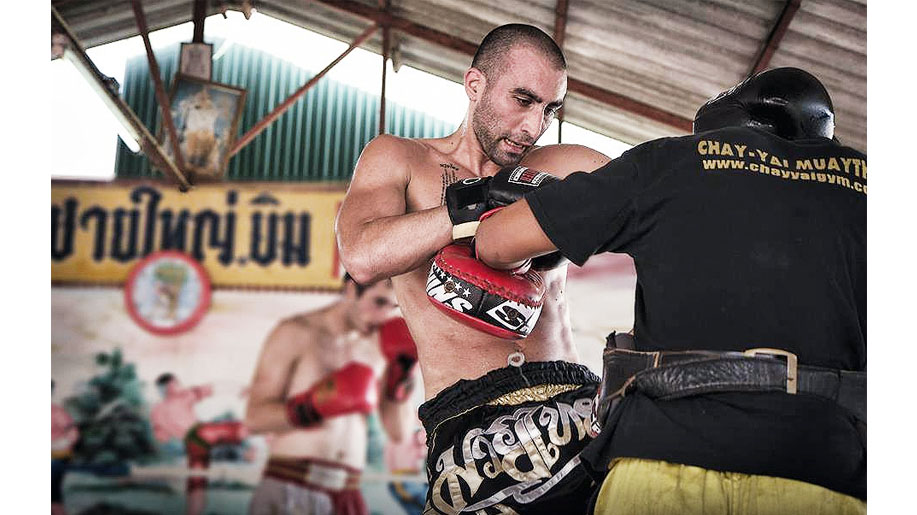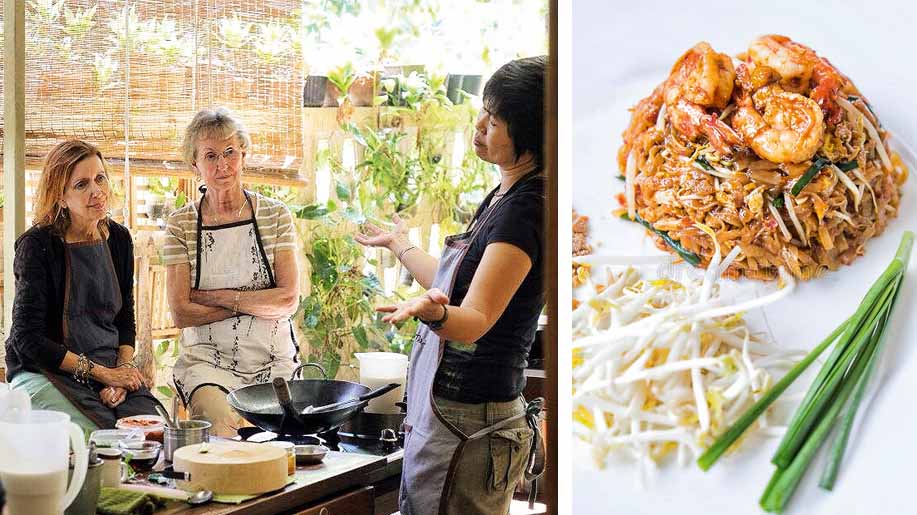
Founded in 1226, this is one of Thailand’s older cities. Netra Venkateshwaran explores the traditional experiences that this mountainous destination has to offer
Our rickshaw pulled up in a narrow lane, just outside an old shed with an open front, in Chiang Mai’s Nonh Hoi area. It was still too early in the morning to hear any sounds other than that of birds chirping and grunting from boxers practising in a shed. We were at Chay Yai Gym (muaythaicampsthailand.com), a boxing ring and training workshop, to learn the basics of Thai boxing.
About 30 years ago, this establishment opened its doors in Chiang Mai as Soonkila Watket Camp. In the ‘90s, it was renamed to honour the studio’s successful fighter Chay Yai Sittehpitak who won two championship titles at Lumpinee stadium, a sporting arena in Bangkok.
Don’t expect anything more than a rustic experience at Chay Yai Gym. We walked into the partially open shed with a striking red boxing ring where two fighters were in the midst of a heated match. They didn’t have much of an audience apart from the coach, and a couple of other students on a break from a training session. Adjacent to the ring, there is a row of punching bags where people practise their technique. On the far end is an old wooden cabinet where we later placed our belongings.
I felt extremely intimidated by the loud grunting and aggression between the fighters in the ring, until a young beaming face welcomed us to our session. He handed us gloves and safety pads before sharing a little about the history of Thai boxing. Colloquially known as Muay Thai, it is the country’s national sport. It is believed to have originated sometime during the 16th century, by the famous fighter Thai Nai Khanomtom. This combat sport stems from the concept of using the entire body as a weapon of self-defence that deploys the knees, elbows, shins and hands to deliver powerful strikes.
After making us warm up with some 100 skips, 20 push-ups and 20 sit-ups, we were directed to the punching bag station. Another coach took over, who helped us gear up for the next workout. He demonstrated basic punches and kicks before asking us to repeat after him, urging us the whole time to pay close attention to the techniques. He couldn’t emphasise harder on how wrong body postures and movements could lead to serious injuries to the wrists, knuckles or other joints. About half an hour later, we were finally awarded with a 15-minute water break before being taken to the boxing ring for the last bit of our session. The coach stood in the centre of the ring, with six of us surrounding him. Each one of us had to approach the coach for a three-minute intensive training session that involved kicking and punching a pad he held up. This technique is believed to help build up one’s endurance, and is unexpectedly exhausting, not to mention strenuous.
Finally, a ringing bell concluded our tiresome, yet exhilarating session at the Chay Yai Gym. We returned the gloves and pads to the coaches and thanked them for the lesson. They helped with a few stretches to reduce the inevitable pain we were warned we would feel the next day.

By now, we had worked up a ravenous appetite — perfect timing for the scheduled cooking lesson at “A lot of Thai”(alotofthai.com), a class by Thailand’s TV celebrity Chef Yui. She conducts sessions in her home where each student (no more than ten at a time) is allotted a separate workstation.
The cost of a session (THB 1,200/₹2,325; 10am-3pm) includes a pickup from Chiang Mai’s downtown area. We rejoiced at the refreshing water bottles and packaged coconut water in the sky blue Volkswagen caravan sent to fetch us from the gym. The ten-minute drive took us through the traffic-laden Chiang Mai Lampoon Road before turning into the relatively less crowded, and comparatively, a lot more green Soi 9.
Within seconds of arriving at her two-storey cottage, Chef Yui enthusiastically welcomed us into the backyard of her home where the cooking stations were set up. A wall behind them reveals snippets of our host’s travels and experiences with other chefs through photographs, including one with UK’s celebrity chef Gordon Ramsay.
My cooking station was equipped with a stove, pots and pans, and ingredients — peanuts, lemongrass, rice noodles, shallots, spinach, chicken, shrimp, egg, half a lime and some tamarind paste to name a few —all weighed out for each dish. I put on an apron, ready to put my culinary skills to use. The first dish was pad Thai. Yui asked us to assemble around her for a demonstration of each step before returning to our stations to follow her orders.
She came to each of us, assisting with the dish whose flavours impressed on first bite. Next we learnt to make the traditional tom yum soup with a new set of ingredients brought to us. As we got down to work, Yui explained that most vegetables we had before us were native to the country. She went on to explain where and how they could be used in other local dishes. At the end of the cooking session, each of us was handed her published book of 30 Thai food recipes, but not before she shared some of her “secret” tips for easy cooking.

Our time with Yui continued at the nearby Talat Sompet market. It’s a busy bazaar designed as a maze with narrow alleys lined with stalls selling freshly prepared food, and ingredients to recreate them back home. We sampled chicken satay and fresh juices at the end of a row of vendors selling fresh seafood like squid, lobster, crab, shrimp, and prawns. Each vendor hollered and waved to grab our attention, shouting attractive prices for his or her catch of the day.
Delighted with our Thai experiences, we returned to the hotel for a quick nap before venturing out later to explore the vibrant Chiang Mai Night Bazaar (7pm-midnight). As friendly as the people appear to be, remember to keep your belongings close to you at all times as pickpocketing is a common occurrence here.
The night market added colour to the moonlit sky. The pathway to the market itself was lively. The footpaths of Th Chang Khlan from Th Tha Phae to Th Loi Kroh are filled with kiosks by locals vending all sorts of memorabilia from small trinkets to replicas of branded bags and ornate kitchen cutlery and crockery. I was most thrilled by the funky T-shirts with hysterical puns illustrated on them. No wonder this was one of the most crowded stalls of them all. Don’t forget to fight for a bargain when shopping. Begin with 35 per cent of the price quoted to you. They may agree to sell at 60 per cent of the originally quoted price.
Amongst these roadside stalls is the main Chiang Mai Night Bazaar building filled with antique and handicraft stores. In comparison, I preferred roaming the streets that were more high-spirited and buoyant; also because it seems like a big fair with the number of food stalls to choose from. I couldn’t resist the fresh mango sticky rice sold here, effortlessly plated beautifully on a green leaf. It’s a delicacy one definitely shouldn’t leave Thailand without trying. It was a sweet ending to my 24 hours in Chiang Mai.












